It’s time for your year end. If you’re looking to review all your financial transactions, it can be a daunting exercise. But Sage Intacct can help you complete this task in the way that works best for you, with the flexibility to jump back and forth between steps if you need to.
In this article, we’ll cover the different steps that can make up the year end process in Sage Intacct, as well as some tips for how you can make year end generally easier.
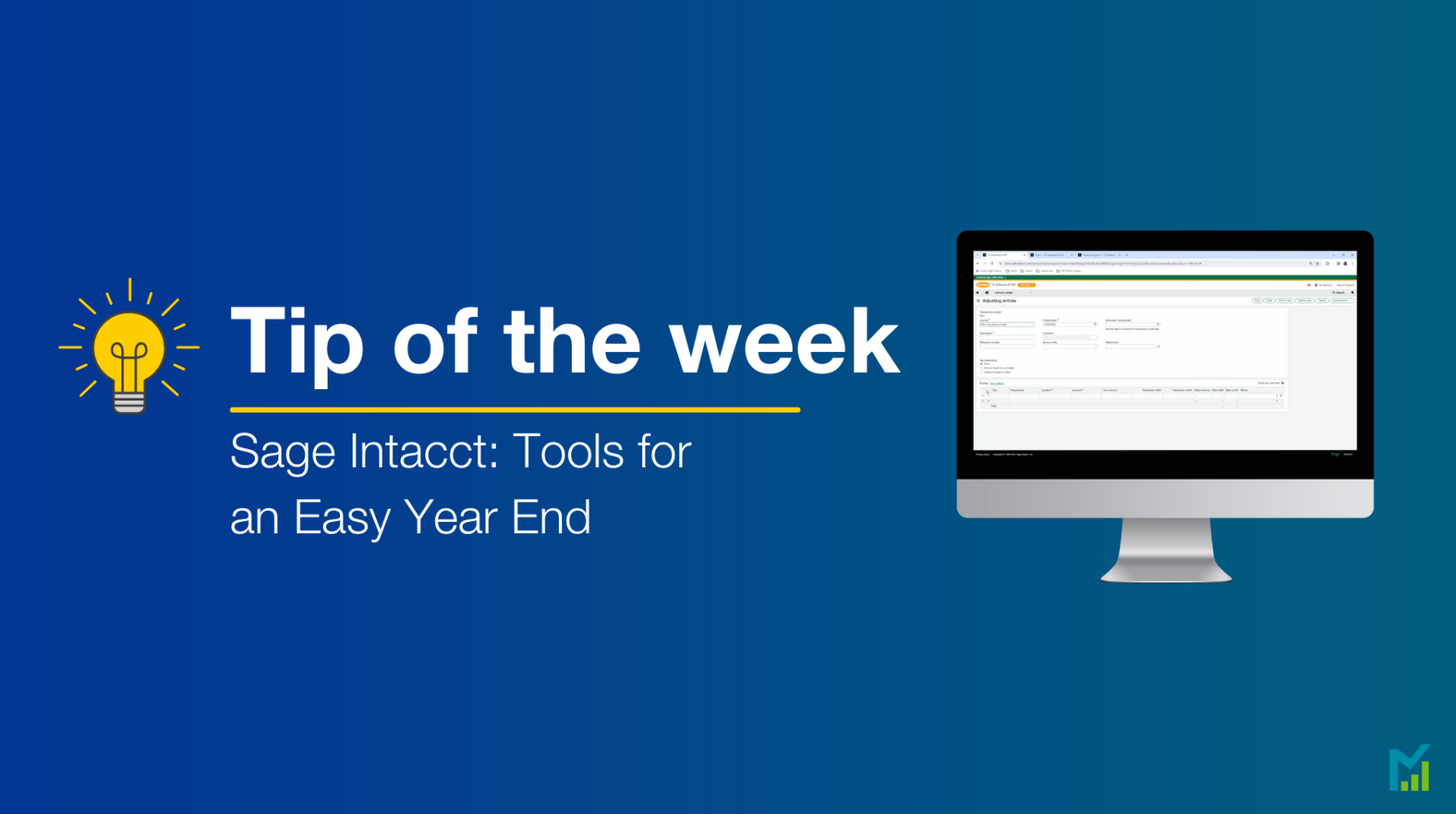
Year End Steps in Sage Intacct
Broadly, the year end process in Sage Intacct can be broken down into four areas:
- Preparation
- Processing
- Adjustments
- Reporting
Note that you don’t necessarily have to tackle these four areas in the order we’ve listed them here.
Preparation
Set Up/Edit Year End Checklists
Creating a checklist can help you define your year end steps in detail, allocating associated tasks to staff and making sure they’re completed on time.
To set up a checklist in Sage Intacct, click on Applications > Company > All > Checklists.
Tip: If you want to be able to get to Checklists easily, click the star icon next to it. This will add it to your favourites.
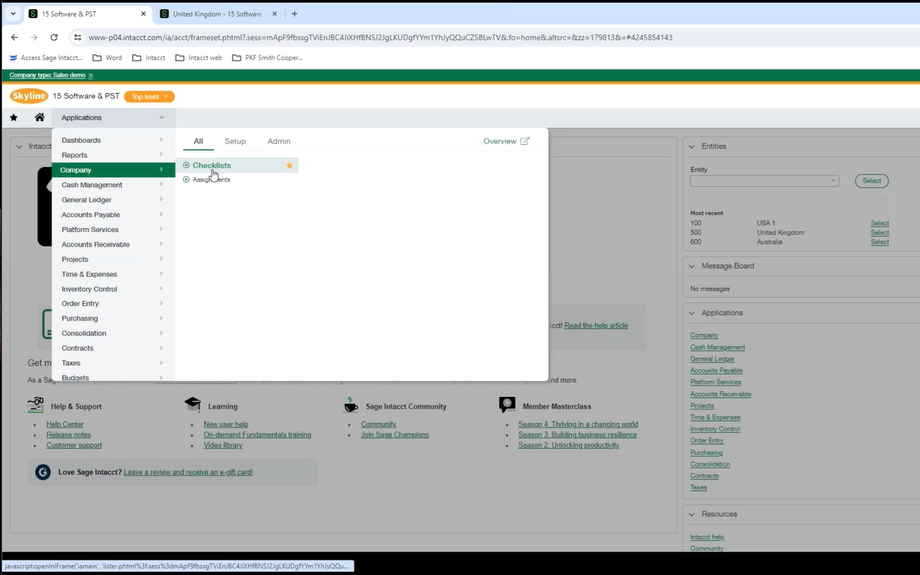
When you create a checklist, you can change its status – marking it as ‘Not Started’, ‘In Progress’, or ‘Complete’. You can then filter out your checklists to only see outstanding tasks.
Once you assign a task to someone, they will get a notification (as long as they have Notifications turned on in their User Preferences).
Some tasks within Checklists have constraints which prevent you from starting the next task. If there’s a constraint on a task, you can drill down into it by clicking in the ‘Constraints based on this assignment’ column. It will then show you more details.
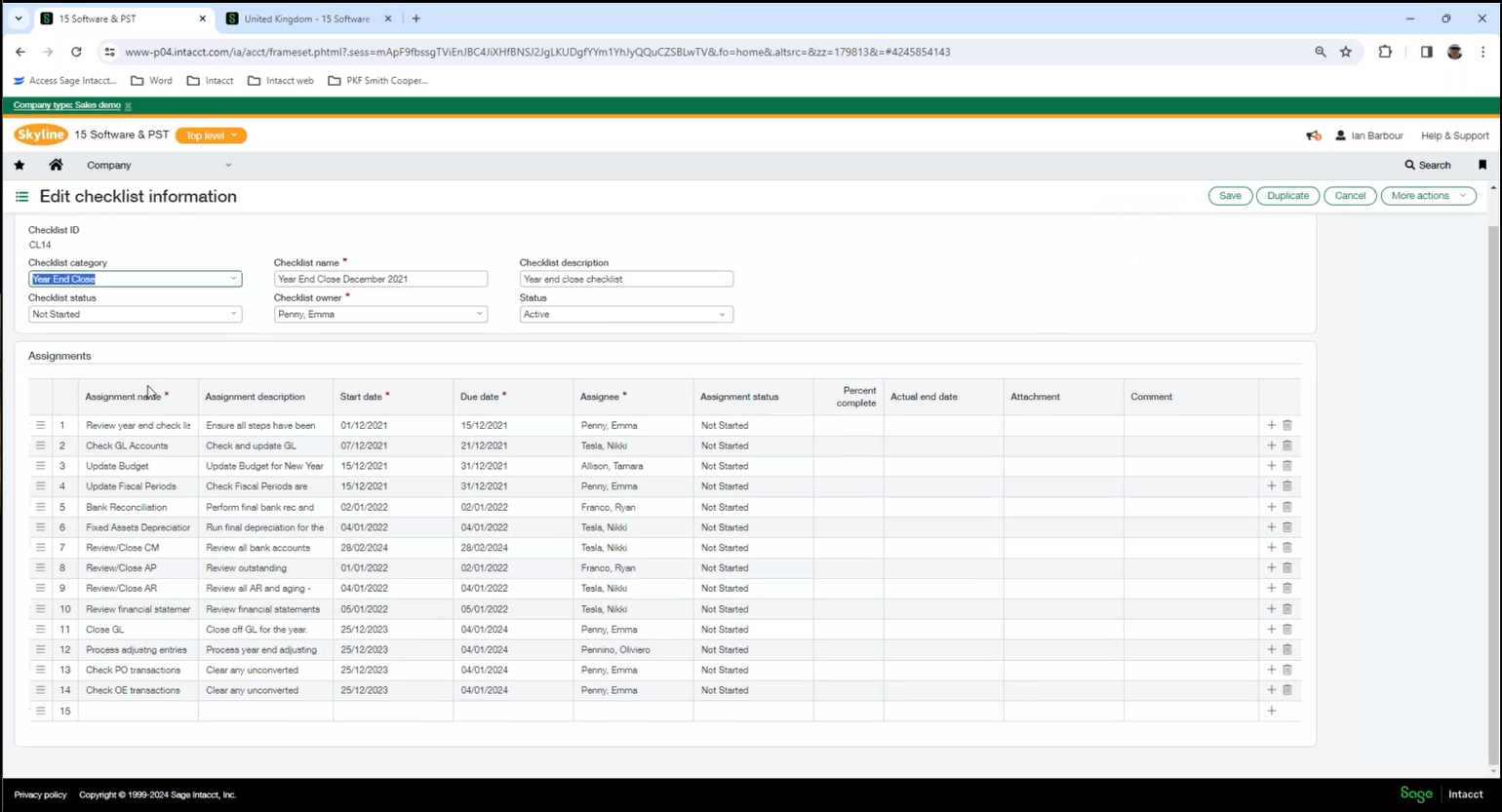
System Settings
Active/inactive users – Before you start your year end processes, it’s good practice to check that the right users are active or inactive. Sage will bill you for any active users, so this makes sure you’re not paying more than you need to!
Review permissions – As Sage Intacct is updated regularly, outdated permissions might mean users won’t have access to newer features.
Ensure General Ledger Accounts are set up correctly – Check account types and period closing types, as well as dimension settings.
You should also make sure any new accounts have been assigned a ‘Quick Start Category’ as this will ensure that they are included in account groups and therefore your reports. You will also need to ensure that the ‘Disallow direct posting’ option is enabled on control accounts that you have set up.
This means payments from those accounts can only be processed to sub-ledgers. This helps to keep those sub-ledgers reconciled – but if you do need to process an entry to general ledgers, the setting can be easily unticked within Intacct.
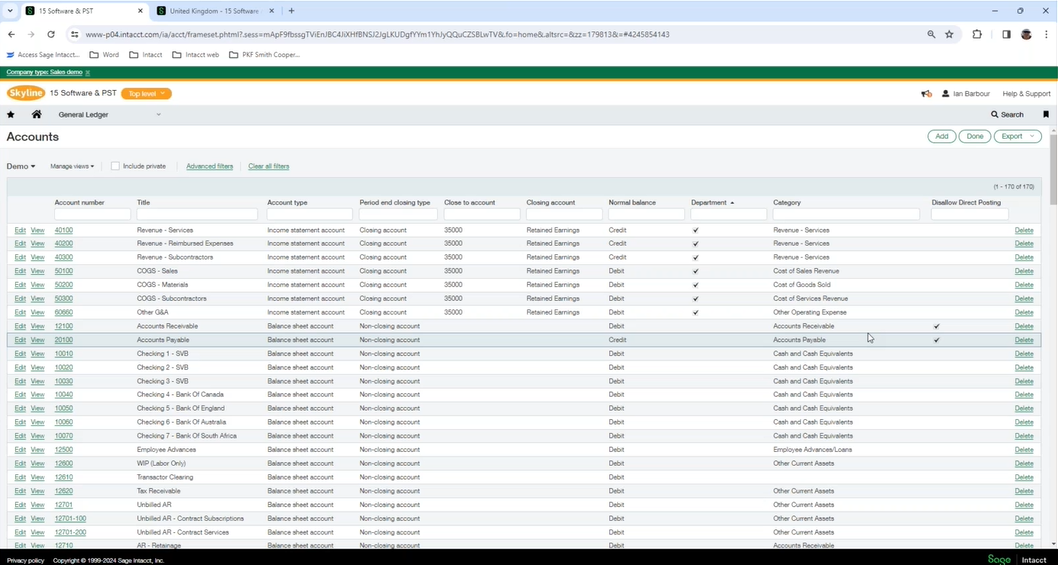
Update Reporting Periods
Reporting periods may not automatically be set up for the new year.
The easiest way to set these up manually is by using the ‘Default’ options for the reporting periods.
The quickest way to do this is by going to Company > Setup > Import Data > Set Up General Ledger Transactions > Reporting Periods >Default.
Reporting periods can also be updated manually, in the Reporting period application. This can be accessed via General Ledger > Setup > Reporting Periods, or Reporting > Setup > Reporting Periods.
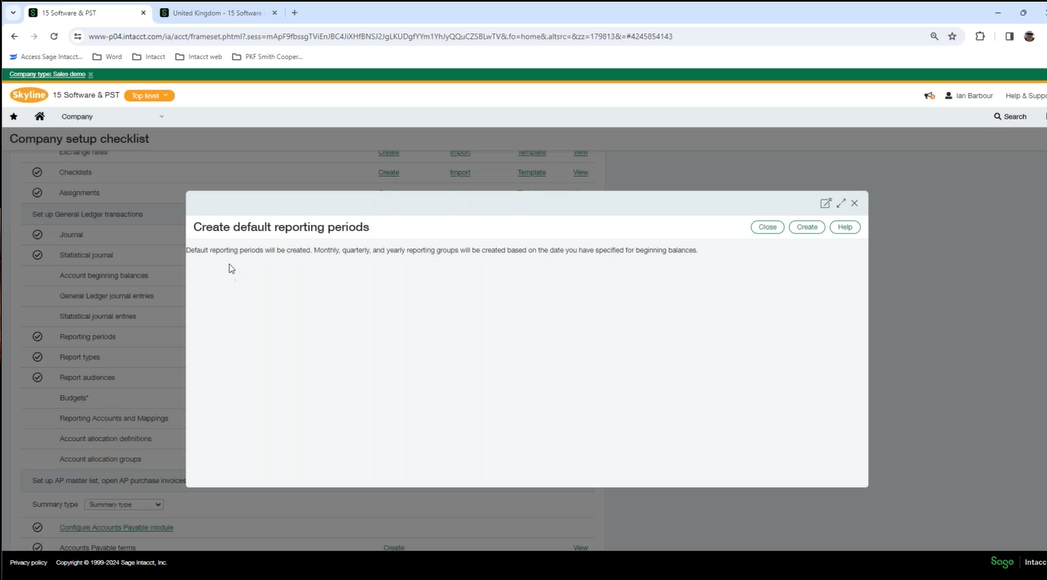
Update Budgets
Though budgeting itself is a much larger topic, you will still need to make sure your budgets have been updated in your reports. You can do this by editing the report and checking the budget column is picking up the correct budget. You will also want to want to make sure that your year end financial reports contain up-to-date financial information, including any new accounts that have been added.
This can be checked via a drop-down in the Financial Report Writer.
Processing
Along with ensuring you reconcile your General Ledger accounts, you should do the same for your balance sheet accounts – ensuring that the dates you use for these reports agree.
When running these reports, the date you use should be the General Ledger posting date.
The ‘Close Books’ button in Intacct will close the books for both the General Ledger and sub-ledgers (Accounts Payable, Accounts Receivable, Cash Management).
If you needed to re-open one of the sub-ledgers retrospectively to quickly add a missed transaction, you are able to do so without affecting the General Ledger or other sub-ledgers.
To find this, go to General Ledger > Books > Close. From here, you can select the entity or entity groups you want to close for, and when you want the closing period to run to.
Note: If you would like to re-open the books for specific entities, you can do this by going to General Ledger > Books > Open.
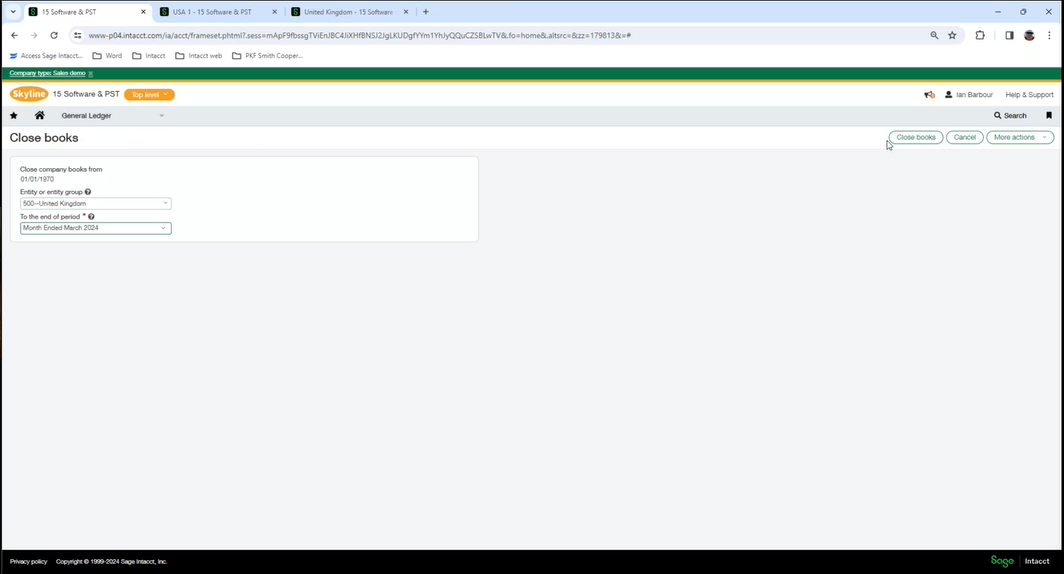
Adjustments
The adjustments you can make to your year end accounts include:
- General Ledger Journal adjustments
- Adjustments to closed books
- Compliance and tax adjustments
- Adjustments for user-defined books
Adjustments for Closed Books
You can create adjusting journals (for closed periods), and standard journals (when a period is still open).
Under General Ledger > Setup > Journals, you’ll find creation links to all the adjustments you can make.
To add a new adjustment journal, just click on what type of adjustment you want to make, click ‘Add’ and fill in the details as normal and post.
Tax Adjustments
Tax adjustments work much the same as the other adjustments – but if you adjust tax thresholds, this will not directly affect the General Ledger.
User-Defined Books
These is another type of books you can transact against in Intacct, separate from your standard accrual book – either to be reported on separately or in tandem with your Standard accruals book for more effective reporting.
The information from user-defined books does not get automatically included with your normal reporting information. However, you can choose to include them as you’re creating a report.
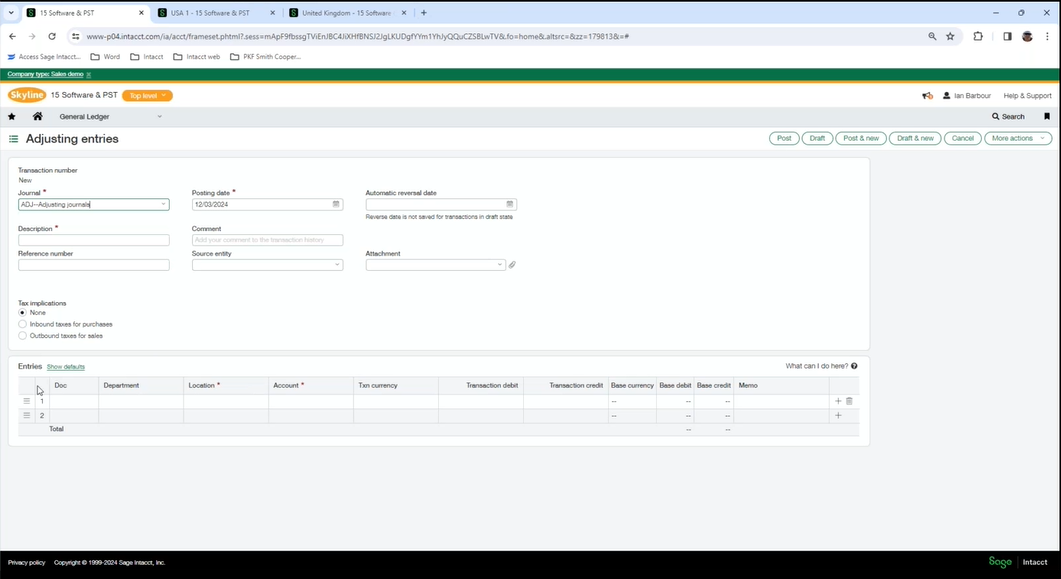
Reporting
Year end reports can include the following:
- Financial reports
- Custom reports
- Standard application reports
- Other reports, e.g ICRW, Velixo.
Financial reports should be reconciled to the General Ledger Trial Balance. They should be updated and reconciled (including filters), and then processed and stored so they can be kept for your records.
Standard application reports can also benefit from being processed and stored to help with year end.
To view your stored reports, and their status, go to
Chosen Application > Reports > My Stored Reports.
Custom reports are accessed via Reports > All > Custom Reports. You can process and store these, but the option will only be visible once you click into a specific report.
All reports can also be found in Intacct’s Reports Centre. After you specify a module using the drop down, you can click on a button at the top of your screen which will show you the stored reports for that module.
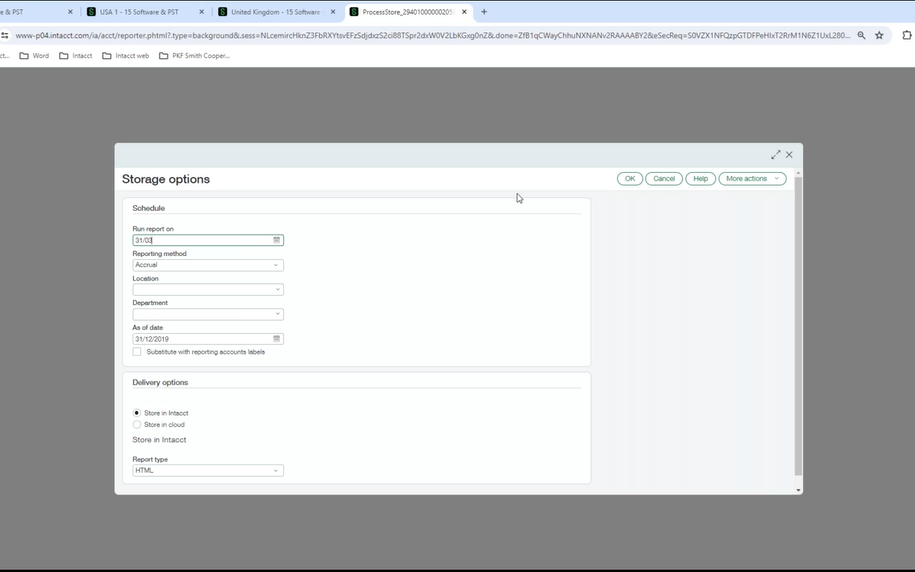
Final Tips
There are also some best practices that don’t fall into the above categories:
- Use the Closed Thru Summary widget – This is useful for being able to see if periods have been closed off at a glance.
- Check permissions – So that only those authorised to open and close books can do so.
- Use meaningful journal IDs for standard and adjustment journals – These make them easier to find later on in the process.
- Create a Year End attachment folder for relevant reports, documents etc – The documents don’t have to be linked to any function in Intacct.
- Use the flip view on account groups – Find accounts not allocated to account groups.
- Check fiscal start date per entity – Your company may have a financial year starting in April. Sometimes Intacct can look at Calendar Year instead of Fiscal Year and report using January as Period 1.
If you would like to stay in the loop about our latest tips then make sure you are following us on Twitter, LinkedIn and Facebook!
For more support concerning your Sage system, take a look at our Sage Support Service. Contact us via the enquiry forms or call 01332 959 008.
Interested to know more about our Sage solutions?
Call 01332 959008 or enquire online today
"*" indicates required fields

